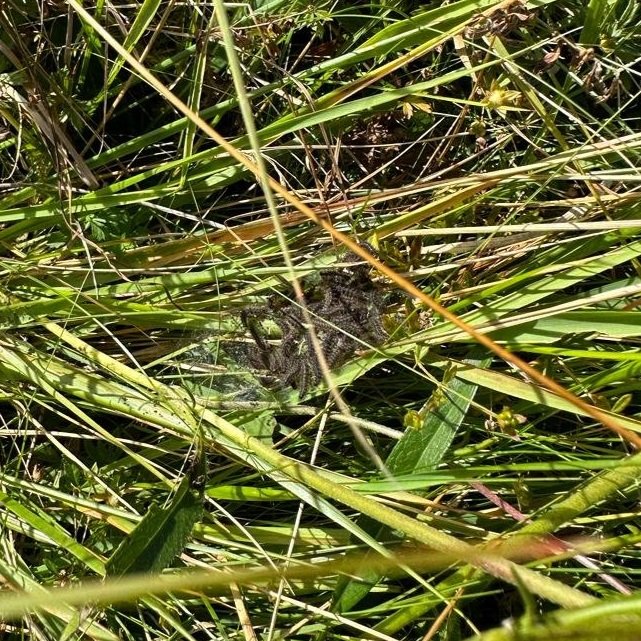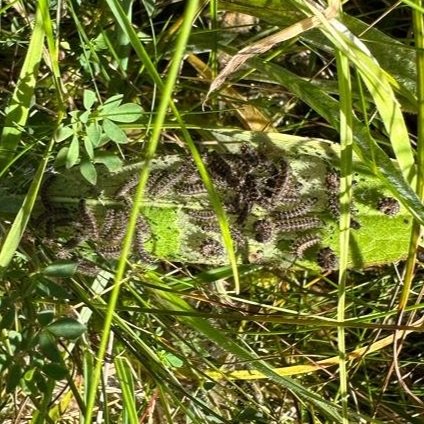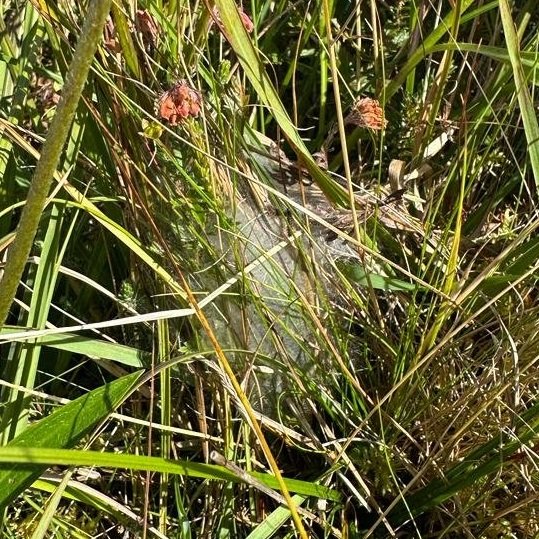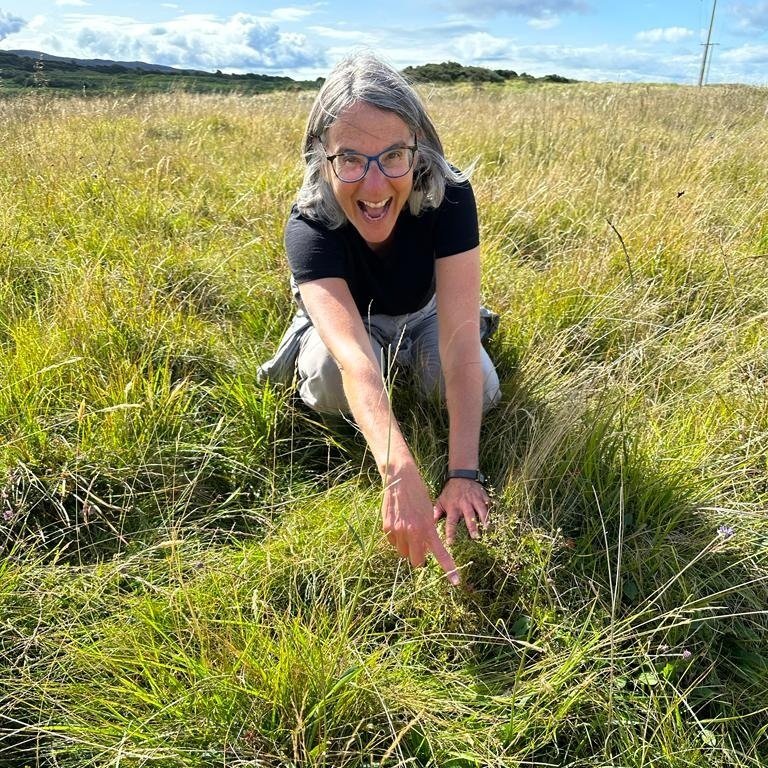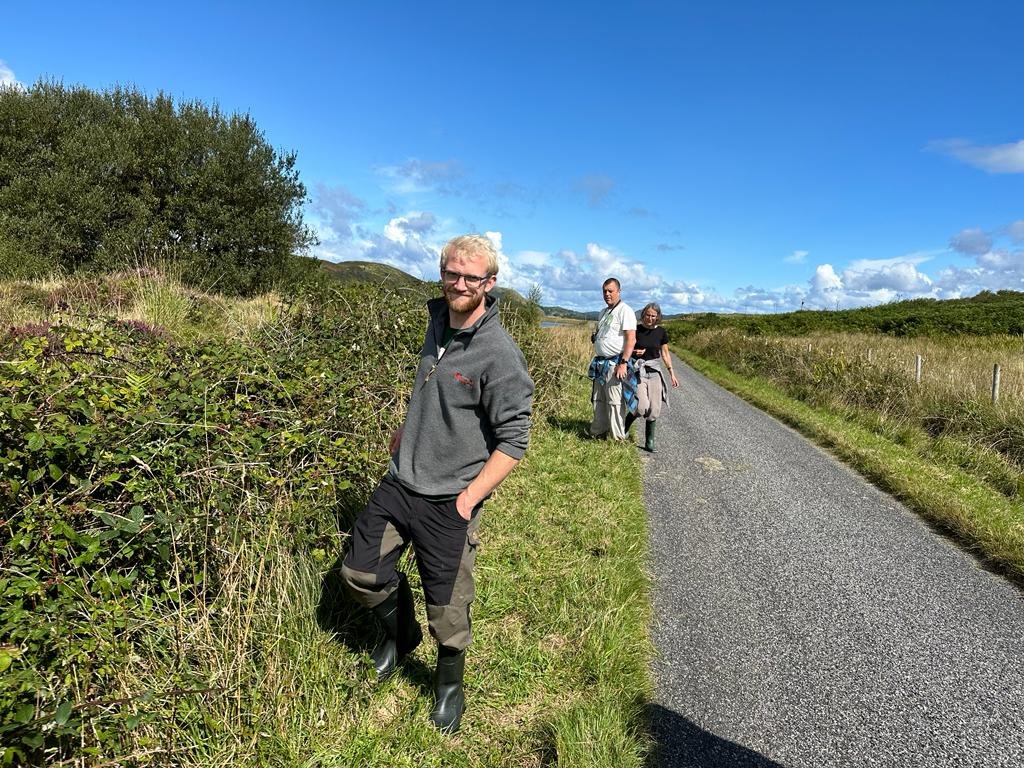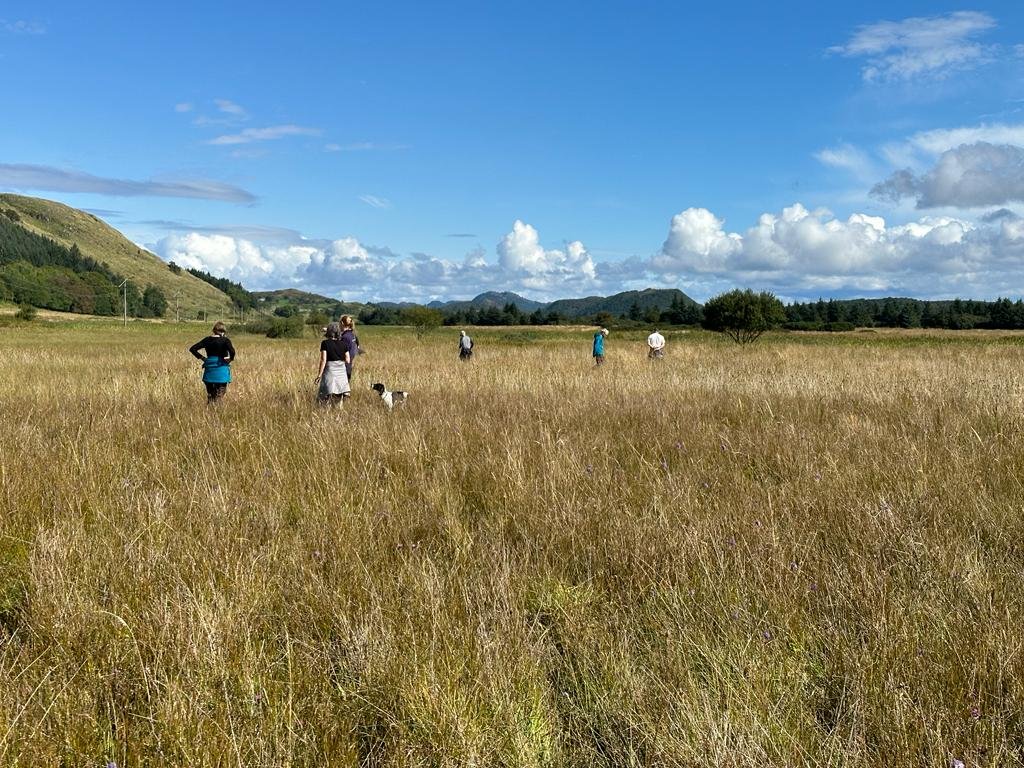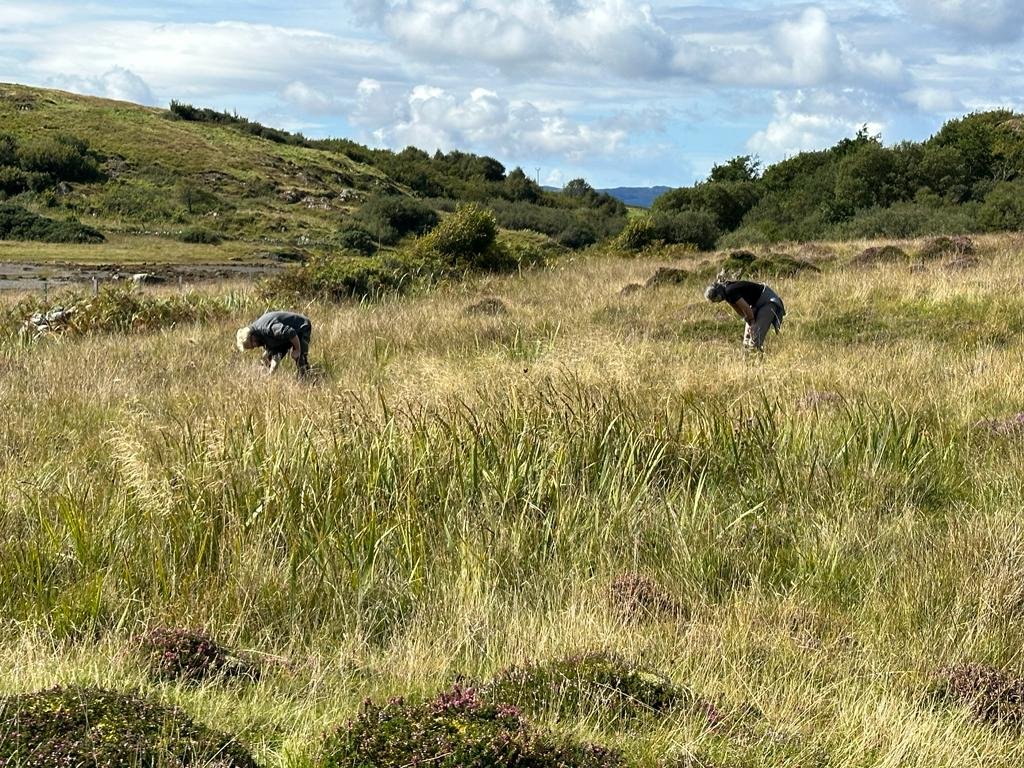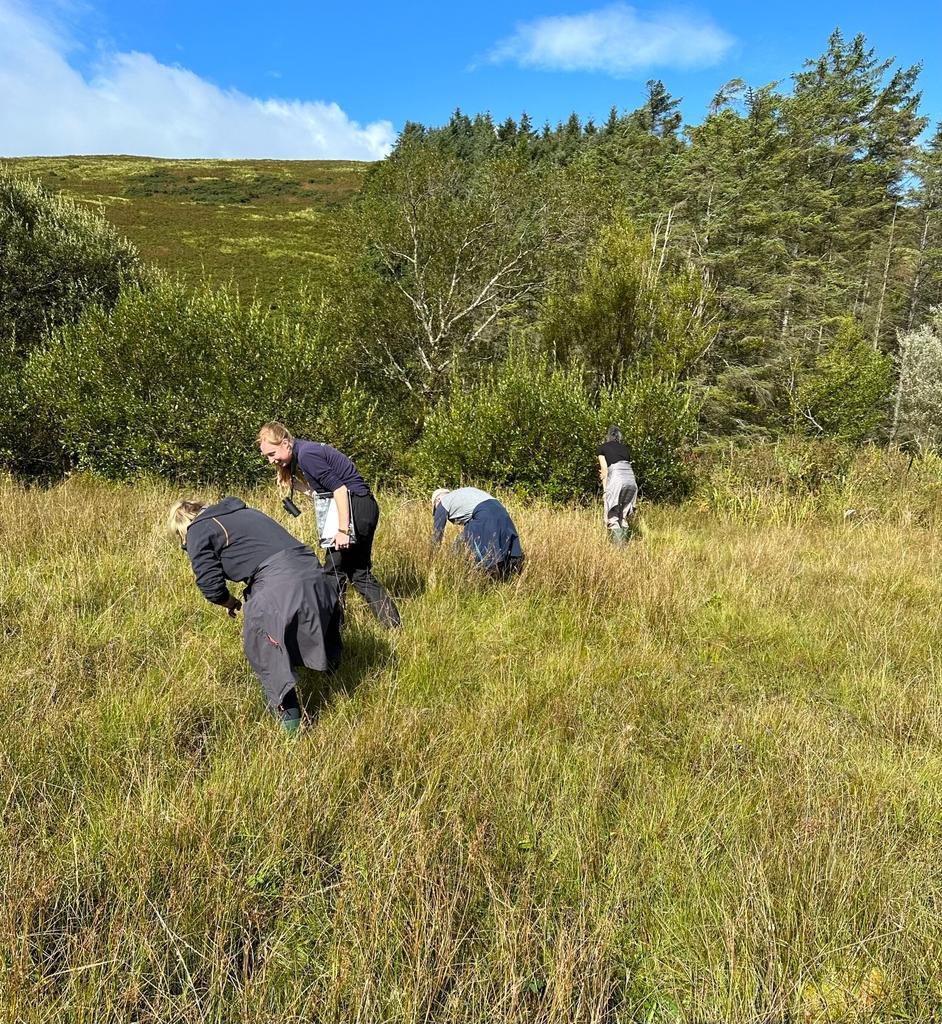Marsh Fritillary Counting at Tayvallich
By Ewan Paterson, Tayvallich Estate Manager
Last Friday was a particularly sunny day at Tayvallich, and the perfect time to undertake this year’s count of Marsh Fritillary (Euphydryas aurinia) butterfly. Teaming up with NatureScot and joined by some of our guests at Coshandrochaid, we set out to count these rare butterflies.
Late August Marsh Fritillary larval web counts
We are very lucky to have this species at Tayvallich, as it is a priority species of the UK BAP and on the Scottish Biodiversity List. In fact, Marsh Fritillary is one of the key species that warranted this landscape being recognised as one of ten Prime Areas for Lepidoptera (PALs) in Scotland by Butterfly Conservation Scotland.
When conducting a count of Marsh Fritillary, surprisingly, it is not the butterflies that are counted, but the caterpillars. The Marsh Fritillary is one of the few butterflies that is feasible to count in the caterpillar stage as they lay unusually big batches of eggs (up to 350), and the caterpillars spin conspicuous whitish webs (also known as nests) as they develop during the summer. The webs are spun to protect themselves from predators as well as a parasitic wasp (Apanteles bignellii) that can cause huge mortality.
Marsh Fritillary caterpillars and larval webs
The best time to count the webs is during mid to late August when they can be spotted trailing over the food-plant, Devil’s-bit Scabious (Succisa pratensis). The optimum window for counting lasts about a few weeks before the caterpillars go into hibernation deep in a grass tussock during late August or mid September (depending on the season).
Though surveys can take place in a wide range of weather conditions, we had fantastic weather and once everyone got there eye in lots of larval webs and caterpillars found. We’re lucky to have good numbers but in certain areas the vegetation was quite high this year, indicating the benefits more grazing from cattle might bring in these areas.
Left: The surveying group
Above: The team in action
A Marsh Fritillary Butterfly
Photocredit: Butterflyconservation.org


